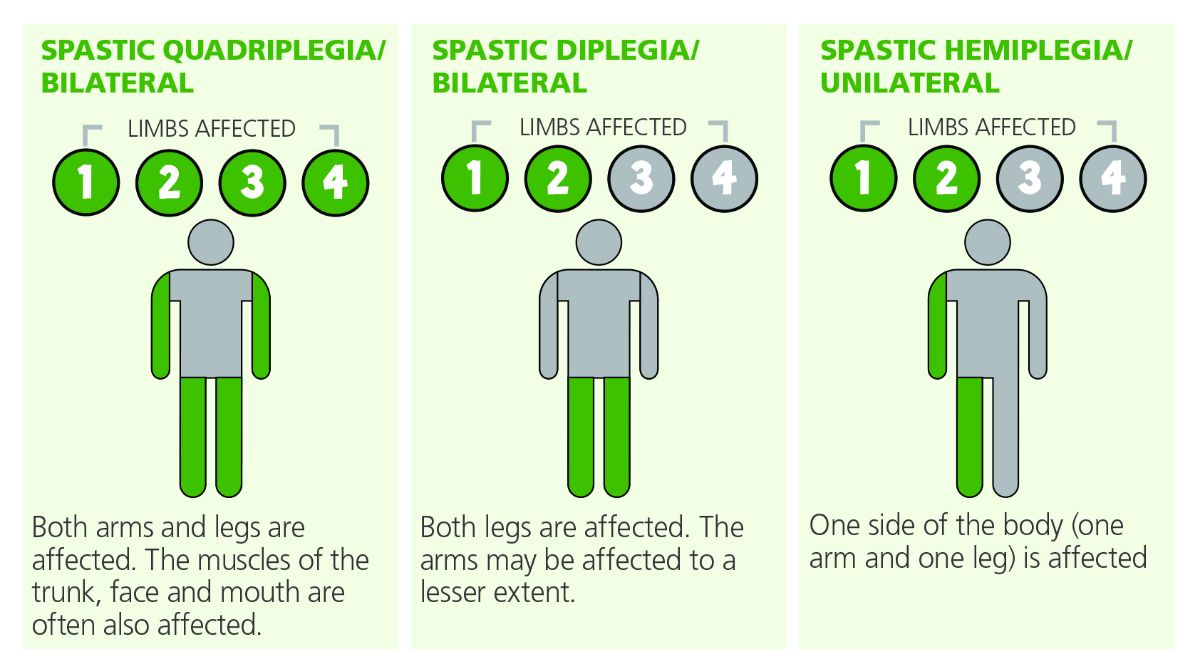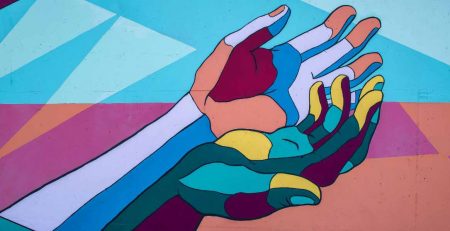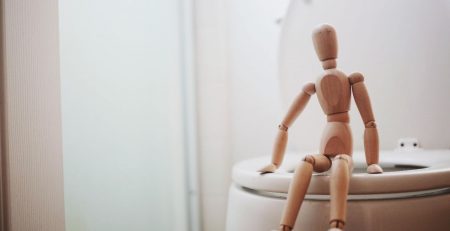
What are the symptoms of Cerebral Palsy?
Symptoms of Cerebral Palsy can vary from one person to the next. While one individual with severe CP symptoms might not be able to walk and need extensive lifelong care, another individual with mild CP symptoms may not require special assistance at all.
What is common though, is that all people with CP have problems with movement and their physical posture. It can affect muscles in the whole body (quadriplegia), just the legs (diplegia), one side of the body (hemiplegia) or just one limb (monoplegia). Many people with CP may also have a range of physical and cognitive impairments such as speech and vision problems.

Of the three classifications of CP mentioned earlier, Spastic CP is the most common type and is caused by damage to the Motor Cortex in the brain. People with this condition feel stiff and their movements may appear stiff and jerky. This is because spasticity is a form of hypertonia, or increased muscle tone, which results in stiff muscles that can make movement difficult or even impossible.
The effects of spasticity on the body can result in structural changes over time. These effects include:
- Changes in soft tissues (muscles, tendons and ligaments leading to muscle stiffness), atrophy (deterioration of the muscle) and fibrosis (changes in properties of muscle fibers)
- Shortened contracted muscles can pull on bony structures leading to bone deformities such as scoliosis of the spine and hip dislocation
- Persistent over-activity in spastic muscles can cause pain in the muscle (pain can also occur as a result of changes in the joint position and deformities due to the abnormal pull of the spastic muscle)

What is Pilates and how can it help CP?
Pilates is a method of low-impact exercise which concentrates on strengthening the body with an emphasis on core strength and stability. It caters to both male and females of all ages, with different body types and abilities, and helps to develop optimal strength, flexibility, endurance and posture, without stressing joints.
Pilates is particularly well suited for those with physical limitations such as Cerebral Palsy, as all exercises are customizable and adaptable to each unique individual. It is a particularly powerful method of exercise that can be used as a form of therapy when performed in conjunction with Zhu’s scalp acupuncture treatment. The guided and tailored movements can help to improve posture, strength, stability, flexibility, balance and coordination. Moreover, as the targeted muscles are strengthened, the severity of CP symptoms such as spasticity & pain can be reduced and improve the individual’s motor function, gait, overall sense of well-being and increase in self-confidence.

Is Pilates for me?
Pilates can benefit all types of people, with specific programs tailor-made for every type of client. Women, men, children, the elderly, individuals with chronic illnesses and pain, athletes, dancers, and even pregnant mothers can benefit from Pilates. Thousands of exercises can be selected according to the individual’s needs, with exercises ranging from basic mat work to more complex Pilates-based equipment – all of which can be modified for the individual.
It builds a stronger core, better balance, increases flexibility and promotes stability. The results are improved posture, body awareness, a healthy lifestyle and more efficient body movement. Pilates is proven to help treat and manage pain by alleviating stress off joints and bones using low-impact exercises. Pilates can be gentle while also challenging.
It is also a great tool for trained instructors to gather valuable information about what body movements are challenging to an individual and determine which imbalanced muscle groups need to be corrected in order to support that movement and restore optimal body position and alignment. For Pilates instructors, it is so important to have a deep understanding of anatomy and biomechanics to support this assessment. Using the full repertoire of available modifications (i.e. rhythm, breathing pattern, small props), exercises can be adapted to apply this powerful method to every situation and client.
So regardless of physical condition, age, or physical limitations, there is a Pilates program that can be curated just for you. With time and a commitment to your well-being, Pilates can give you a greater sense of your body and provide a platform for a healthier life!

Rudy is a certified STOTT Pilates Instructor who leads clients to work towards fitness goals, injury prevention or injury rehabilitation including spinal cord injury patients and Multiple Sclerosis (MS) patients. She regularly participates in workshops and seminars to stay up to date with current mind-body research and development and provides 1-on-1 pilates session for all ages and mobility levels.













Leave a Reply
You must be logged in to post a comment.